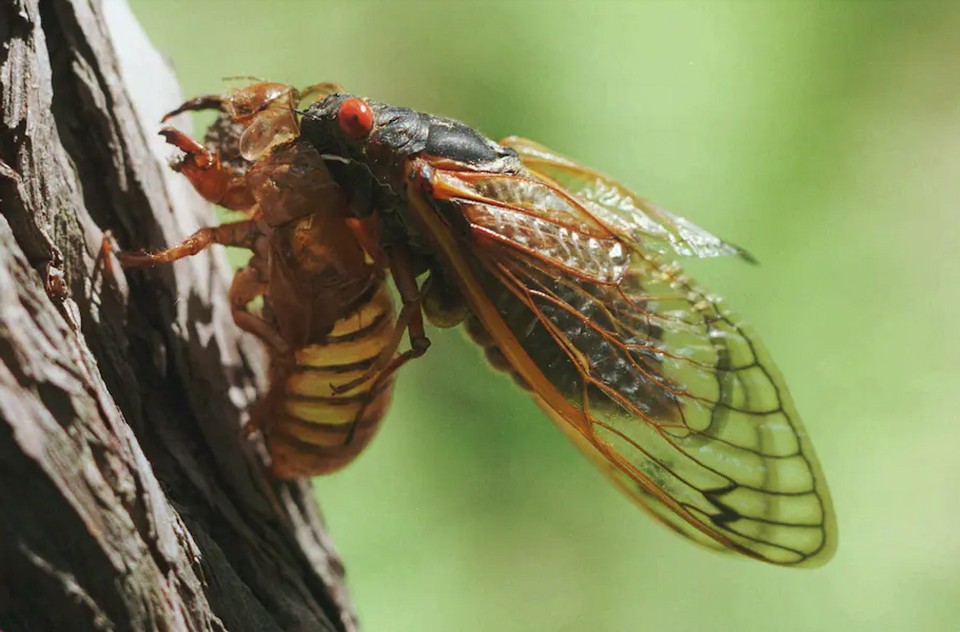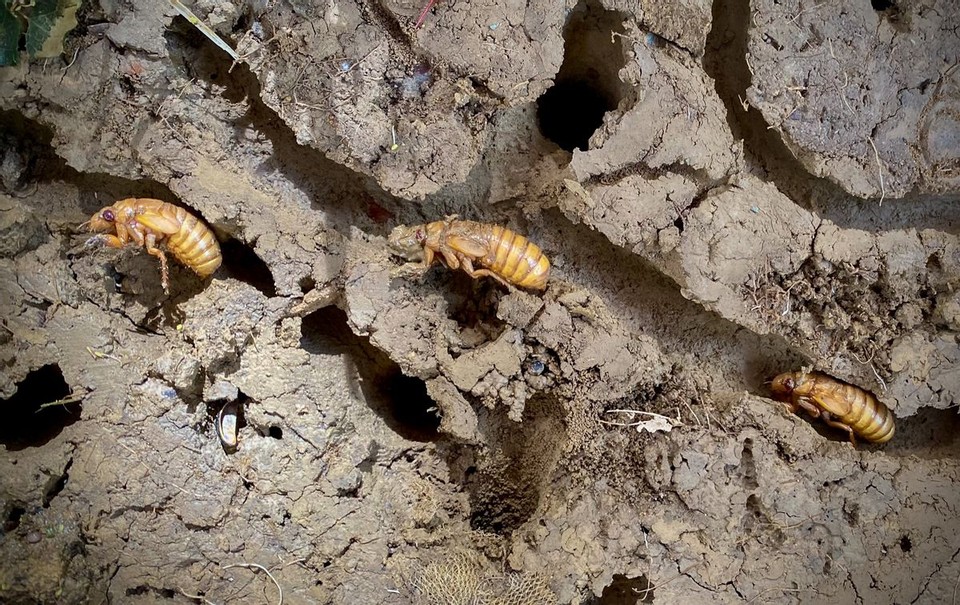Transformation of Cicadas – This summer, the brood X cicadas are coming out in full force in 2021. They have been underground since 2004 in their nymph stage, waiting to emerge above ground.
Just like most other insects, the cicada goes through different stages of metamorphosis. Within each stage, the cicada goes through a series of changes, through these changes the cicada’s appearance can differ. The time span in which the cicada completes its metamorphism is much longer than most insects. Let’s go through the individual steps of a cicada’s metamorphosis process.
Stage 1: The Egg
All cicadas begin their life cycle as eggs, just like any other insect who performs metamorphism. The adult female cicadas will lay around 200 to 400 eggs in tiny holes that they make in trees. After ten weeks the eggs hatch and the young are called nymphs. These nymphs will fall off the trees and burrow into the ground. When they start burrowing into the ground, they will typically go 6 to 18 inches deep and attach to a tree root. This tree root will provide nutrients for the nymph.
Stage 2: The Nymph
The nymph will stay underground for more than ten years. They will acquire all their nutrients from tree sap and be out of the way of predators. The majority of the cicada’s life is spent in the nymph stage. Once it is time for the brood to emerge, the nymphs will all emerge simultaneously and crawl up the trees to begin their metamorphosis process.
Stage 3: Metamorphosis – Transformation of Cicadas
During this stage this is where the nymph cicada will transform into an adult cicada. They will climb up a tree and begin to molt their outer shell. This a beautiful process to watch because you can see the instant transformation of the cicada. The process takes hours to complete and once done the cicada has completed its final transformation. Depending on the gender of the cicada this will affect their adult life. Male cicadas will make abundant noise to attract a female mate. They make these exuberant noises through the membranes in their abdomen. They have an air sac that allows them to amplify the sound so they can spread their mating call farther. The hotter the day, the louder their mating call will be. As for the female cicadas, they will spend their adult life looking for a mate and creating eggs.
Learn more about Cicadas at uspest.com! Follow us on social media at @u.s.pest


